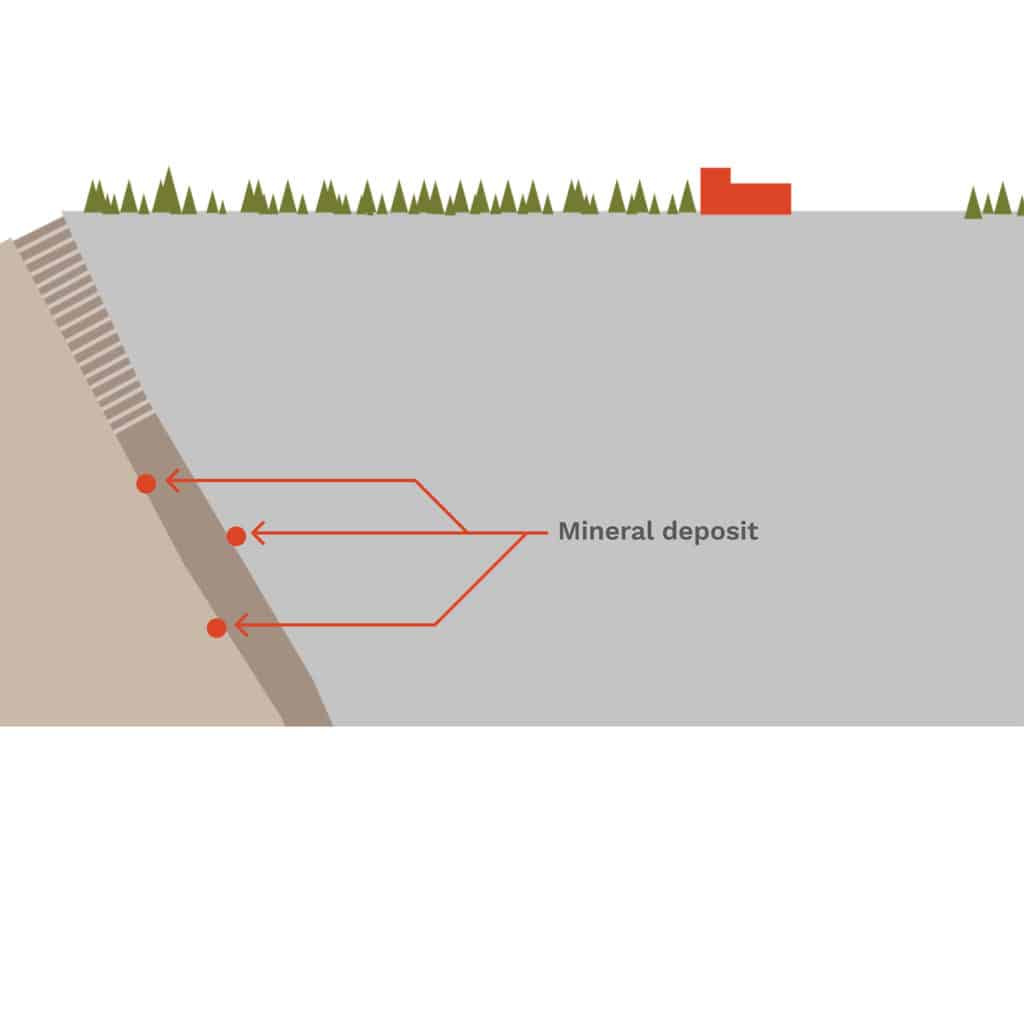The Twin Metals Minnesota (TMM) project targets minerals in one area of the Duluth Complex called the Maturi Deposit. We’ve studied this deposit for more than a decade and it’s different than many other non-ferrous deposits in the United States.
Because of the way it was formed, the minerals are more condensed in a narrow band. This allows us to mine underground and surgically extract the ore. In fact, about 80% of mining will occur below 1500 ft and about 40% will occur below 2700 ft. The Maturi deposit that we’ll mine is a contact-style mafic copper-nickel deposit. That’s different than many of the world’s copper deposits, called porphyry deposits, which represent about 90% of the world’s copper deposits and require open-pit mining.
Another point of difference: our continuing studies show that the tailings produced (the leftover sandy material once the metals are extracted and shipped to customers) will be non-acid generating. This is due to the geology itself and our mining method. Also, independent research confirms these findings.
Our core storage facility in Ely houses 1.5 million feet worth of core samples that we have drilled from the deposit over the past decade; another half million feet of samples are at state storage facilities.
With advancements in mining technology and safety, TMM now has the means and technology to mine the deposit in an economically and environmentally responsible way.
